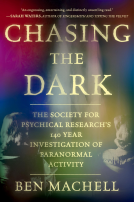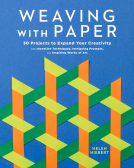
Walking the Streets/Walking the Projects
Adventures in Social Democracy in NYC and DC
by Owen Hatherley
This title was previously available on NetGalley and is now archived.
Send NetGalley books directly to your Kindle or Kindle app
1
To read on a Kindle or Kindle app, please add kindle@netgalley.com as an approved email address to receive files in your Amazon account. Click here for step-by-step instructions.
2
Also find your Kindle email address within your Amazon account, and enter it here.
Pub Date Jun 11 2024 | Archive Date Aug 21 2024
Repeater Books | Repeater
Talking about this book? Use #WalkingtheStreetsWalkingtheProjects #NetGalley. More hashtag tips!
Description
Walking the Streets/Walking the Projects is an insightful exploration of the remnants of a social democratic America and a thought-provoking argument about its future.
The book traces the rise of a 1960s urban ideology that celebrated bottom-up, organic city development while criticising state-led planning that resulted in lifeless, sterile "projects." Using walking as a method, the author tests these ideas across New York City, with a brief interlude in Washington, DC, examining a wide array of urban developments.
Key areas explored:
- Cultural complexes in Manhattan
- New Deal-era public housing in Brooklyn, Harlem, and Queens
- Roosevelt Island’s social experiment
- Communist housing co-operatives in the Bronx
- Union-led rebuilding of the Lower East Side
- DC's Metro system
By walking through these spaces, the book reveals that, despite their flaws, fragments of a more equal society were built in the past and continue to thrive today. Walking the Streets/Walking the Projects asks what lessons a new generation of American socialists might learn from these surviving social democratic enclaves as they envision a better future.
Advance Praise
"Hatherley goes West — into the Great Satan — armed with sarcasm, Socialism, sturdy shoes. He takes on the New York Ideology and its sacred cows. He celebrates a little-known fact: New York has more cheap public housing than anywhere else in North America. As always, he's a skewer and a seer."
--- Sukhdev Sandhu, author of Night Haunts: A Journey Through the London Night
"I've been involved with New York City for over 60 years, but reading this made me feel as if I'd just gotten off the bus from Rubeville. Hatherley lays out the great social-democratic city-state that flourished in the 1950s and '60s, only to be ravaged by private interests in the following decades. It filled me with retroactive pride."
--- Lucy Sante, author of Low Life: Lures and Snares of Old New York
Available Editions
| EDITION | Other Format |
| ISBN | 9781915672445 |
| PRICE | $16.95 (USD) |
| PAGES | 280 |
Available on NetGalley
Average rating from 8 members
Featured Reviews
The book is a travelog of the author's time in the United States, primarily in New York City, but also in DC. The author's aim is architectural criticism, but from a street side perspective, a sort of waggish interpretation of Jane Jacobs' beliefs about cities. But the memoirist element is substantial, a sort of diary of someone not as accustomed to doing as much walking wandering out in "the Great Satan" and casting shade everywhere.
The book starts with a more general discussion of the author's interpretations of New York City architecture, then briefly looks at the subway, before turning to the philosophical core of the book: public housing. The author considers the public housing developments in New York City as something that gives lie to what we could call both right and left urbanism and urban planning, to government projects in general, and most specifically to social democratic plans. This includes public-private or private development...sometimes. The book has something of a consistency problem, a lot of what seems like post hoc reasoning or different sections that I could not reconcile.
Anyway, these developments are on the whole successful, and sometimes their peril in losing their public elements are the proof of their success, since they are more desirable than market-created apartments, and generally the best places to live in NYC and preserve the city's class and racial diversity on the whole.
The author goes as far as to support the concept of 'slum clearance,' usually treated in the modern world as racist, arguing it was not disruptive, and the discontent arising out of it was about not getting a piece of the new development. I though we had a term for when elites use the levers of government to shape a neighborhood to suit them at the cost of the current residents, but I assume the counter-argument would be that only capital can gentrify.
The author visits the DC metro and writes a tragicomic tale of his journey there and around there. His point is to look at a public project specifically considered a great success.
The book then returns to New York City, and begins to focus on a concept that has come up repeatedly in the book of the ills of the New Deal and in general how U.S. Socialists have tended sell out the (less racist) U.S. Communists, falling for the better being the enemy of the good. Is is treated as something still going on in political life today, and something where the history around certain housing projects provides the best examples. This as a concept has come up already, but the end of book starts to hammer on it.
I think that some of the examples are quite striking in proving the author's point, or at least shocking the conscious. But as an argument, it relies on counterfactuals.
Overall, the architectural criticism is insightful. The history here is good in rounding out the history of housing in the U.S., though I think that its geographical limits may create misleading results. The author thinks that they are justified, both in a travelog sense, but also in the sense that he considers New York City to be the only place that has yet to tear down all of its housing developments. Still, the history is detailed enough.
I think that the DC section is the strongest as an argument. It suffers from the same weaknesses as the rest of the book, but is where the author's argument is clearest in its application. And the Mean Girl act is de rigueur for whatever the Dirtbag Left is now.
The paradox of this book is that it is person-centric, but not people-centric. Despite talking about Delaney and designing the book to be a take down of Jacobs, there are no humans here. Or rather, they are strictly in the abstract. The section on Queensbridge feels particularly bad in this regard, in its jubilant praise for its cultural cache as a violent place that great art came from, followed by flip observations of the people there.
I can get particular as to why this section annoys me so much, namely that it annoyed me in the same way that Jane Jacobs annoyed me. The author focuses on public space as critical to the project, and talks about how well that public space was used. Jane Jacobs, in Death and Life of American Cites, does the same thing, about similar spaces, except to the opposite description of the space as unused or dangerous. Both or neither of the observations could be true; both could have alternate causalities than the space itself, which the author uses as a punchline; neither gives voice to the residents.
However, this becomes one of those exercises in judging a book by its context. As a polemic, stating a position for debate, and taking Refuge in Audacity I love it, and want more like it, making other arguments. It feels much more honest than some of the three card monte that I read in purported history.
My thanks to the author, Owen Hatherley, for writing the book and to the publisher, Repeater Books, for making the ARC available to me.
 Michael J, Educator
Michael J, Educator
This is another fine book from Owen Hatherley at the intersection of architecture, housing and socialism. It‘s a travelogue of his visits to New York mainly - he also travels by train to Washington DC - in which he walks through areas where various collectivist housing projects (in the broadest sense) endure. It‘s typically informative, witty and opinionated- Marshall Berman comes out of it very well, Jane Jacobs rather less so. How is Hatherley so prolific? I think it’s because he relies solely on his knowledge, research and eyes. What he doesn’t do is talk to anyone as he walks through the projects. And that’s what I wanted some of by the end of what is quite a short book - some other voices, differently informed and local. Of course, that would have been a different book and we should probably be content that Hatherley keeps producing the books he does.
 Reviewer 876149
Reviewer 876149
Owen Hatherley’s account of his time walking the streets of New York is witty and erudite yet accessible, conversational and incredibly informative. Arriving in autumn via the dilapidated environs of JFK, Hatherley’s journey through the city combines musings on the design and layout of specific streets and buildings with an overview of the social and cultural history of New York - from the heyday of Patti Smith and the New York punk scene to the street-centred emergence of hip-hop genres. Although it builds on aspects of Hatherley’s earlier work around architecture, constructing a critique of the figures instrumental in shaping the city’s development – particularly its numerous public housing projects - from campaigner Jane Jacobs to urban tsar Robert Moses, it also doubles as an entertaining, politically astute guide to this iconic place.
Thanks to Netgalley and publisher Repeater Books for an ARC
 Richard F, Reviewer
Richard F, Reviewer
Walking the Streets/Walking the Projects: Adventures in social democracy in NYC and DC, by Owen Hatherley
I wanted to read Walking the Streets/Walking the Projects: Adventures in social democracy in NYC and DC because the premise sounded fun: who doesn’t want a social democracy adventure? Plus, The Power Broker was sitting on my bookshelf and I wanted to know what Owen Hatherley had to say about it. Three pages in, he tells us he hasn’t read The Power Broker, so I thought I should read that first, and started it (though I still haven’t finished it). I picked up Streets/Projects again on a flight into NYC. In some ways it made for far better last-minute trip preparation than did my much-thumbed standard guidebook.
You may know about architecture, and cities, and Hatherley’s views on all these. This was my starting off point, and within a paragraph of the introduction, I’m lost. There are signifiers and references which I don’t understand. Hatherley talks about a whole bunch of folks and I’ve heard of perhaps two of them. It’s not as though I was expecting a Ladybird guide, but I’m hoping that Hatherley will at some point defend his polemic. I cling on to an early sentence which makes me think I might get my head round it all eventually:
Yes, you can understand the city from using your eyes and your ears, no you don’t need any special knowledge and least of all a sinecured position to do so.
By the time Hatherley’s got his views on JFK airport off his chest, he’s better company. He talks about architectural fashions in the 1900s and on the curiously old-fashioned styles in which New York built its technologically-advanced skyscapers, sandwiching a section on the Lincoln Centre. He prefers London’s Royal Festival Hall, and explains why. Now we’re getting somewhere. He discusses the development of the centre, and where power lay, and how an entire neighbourhood of the powerless (who just happened to have black or brown skin) was razed to the ground to provide the space. Then Hatherley goes to Times Square, and discusses different usages of urban space and the balance between sleaze and money that has fuelled its story. And then there are references that this ill-travelled reader gets, and we’re off to the races. Times Square, you see, looks like a ‘mere Piccadilly Circus’ with ‘nothing so gloriously seedy as the grimy light boxes and anime characters of an Akihabara or Shinjuku’. Hatherley continues around Manhattan, pointing out weird buildings, discussing the ‘prosperous and wonderful’ Rockefeller Center and making arch comments about the MetLife building above Grand Central Station. We learn about the ‘“skyscraper index”, which predicts that the completion of a “world’s tallest building” will either immediately precede or coincide with a financial crash’. And he explains how these buildings fit with the social history of the city.
But we’re here for social democracy and adventures therein. Hatherley goes to Roosevelt Island, to Queensbridge, to Washington where the metro is brilliant (and is a strategic attempt to provide a universal service in a land that prioritises ghettoed services) and then back to New York where it is squalid, but also brilliant. He explains the tension between social housing and the market; between communities and developers; the legal restrictions that are meant to lower - yes, lower - the quality of social housing. Every few blocks, as we walk around New York, I find myself saying, ‘According to Hatherley…’ Eventually I mix it up with, ‘Owen says,’ in an attempt to avoid annoying my wife. In this, I fail.
But Hatherley is an excellent companion, and bookends our trip - our return journey involves some time in the fabulous TWA Hotel at JFK which also ends his book. He’s witty and knowledgable. I did look in vain for his book in NYC bookstores (all of which, of course, stocked The Power Broker), for I would like to think that New Yorkers would have their views on his commentary.
I don’t really intend to reduce this polemic to the status of an upmarket guidebook. Partly, that’s a function of how I experienced it. But it’s also due to the book leaning heavily on Hatherley’s views and his sources that are primarily formal and written, rather than verbal. There are few interviews, few other voices to mix things up, despite the premise that the city is seen best when walking in it rather than observing from a map. Among the canon of city planning discourse, I’m not sure where to put it. But if you’re going to New York, and have perhaps heard of Piccadilly Circus and Akihabara, don’t leave home without it.
Readers who liked this book also liked:
Carine Laforest;
Children's Fiction
We Are Bookish
Historical Fiction, Literary Fiction, Multicultural Interest
Fumiyo Kouno
Arts & Photography, Comics, Graphic Novels, Manga, Reference
Sravana Borkataky-Varma; Anya Foxen
Health, Mind & Body, Nonfiction (Adult), Religion & Spirituality


















